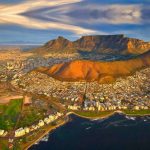Day 1: Arrival Casablanca
Welcome to Morocco!
Today your flight arrives into Casablanca. After clearing customs and immigration procedures, you will be met by out representative and transferred to your hotel.
Casablanca, whose name evokes good living, romance and adventure in a tropical setting, is an image that the 1943 Humphrey Bogart film conveyed to cinema-goers in the drab years of WW II. Originally settled by Berbers in the 7th century, Casablanca’s fairly recent growth has made it the bustling, French-influenced business center of Morocco it is today.
Day 2: Casablanca – Fes
B
This morning’s sightseeing begins with an excursion around the port city of Casablanca, Morocco’s largest metropolis and its industrial hub. During your tour you will visit the Hassan II Grand Mosque. The mosque is amongst the largest in the world and can house as many as 25,000 worshipers. The mosque’s minaret is the tallest religious structure in the world. Built on reclaimed land, almost half of the surface of the mosque lies over the Atlantic water. This was inspired by the verse of the Qur’an that states “the throne of God was built on the water”.
This afternoon, you embark on a city tour which highlights Rabat’s cultural influences and the superbly preserved relics of its Moorish past. Rabat’s most famous site is the 12th Century Hassan Tower the incomplete minaret of the great mosque built by Yacoub al-Mansour. Located alongside is the mausoleum dedicated to Mohamed V, the founder of modern Morocco and grandfather of the current king.
You will also pay a visit to the Oudaya Kasbah, which is built on a bluff overlooking the Atlantic Ocean. Its gate is one of the most beautiful surviving in the Moorish world, and within its walls you’ll explore a delightful craft museum (housed in a former palace) and Andalusian garden, complete with melodious fountain and sweet smelling orange trees.
At the conclusion of your sightseeing, you are transferred to Fes (3hours drive) your hotel where there will be time to freshen up before dinner.
& Moment: enjoy a Moroccan mint tea in Café Maure of the Oudaya Kasbah with a breathtaking view
Day 3: Fes
B
Today you take a step back in time to the Middle Ages when you visit one of the most imperial, timeless and untouched cities in the world – Fez El Bali (Old Fez) – the cultural heart of Morocco. You will explore some of the 9000 narrow lanes, alleys and souks that make-up the labyrinth of the city’s old quarter, originally founded in the 8th Century AD by Moulay Idriss I.
The Imperial capital was a renowned center of medieval learning and at its heart still remains the Karaouine, one of the oldest, still functioning universities in the world. In the neighboring building is the Attarine Medersa (Koranic college), a jewel of Hispano-Moorish architecture, built in the 14th Century.
You also visit Fez El Jedid (New Fez), built by the Merinid Dynasty in the 13th Century. Here you will see the Royal Palace, mosques, medersas, souks and the city wall. Most notably, Fez El Jedid is home to the Mellah, the old Jewish quarter, which provides an interesting insight into Jewish architecture. The wrought iron decorated windows and splendid carved wood balconies of the old mansions are particularly outstanding. The medieval Medina is a UNESCO World Heritage Site.
The balance of the day at leisure
Optional Insider Access: Dinner with a guest Speaker in an authentic Riad (optional and to be quoted separately).
Day 4: Meknes & Volubilis
B
After breakfast, you depart overland to Meknes (a UNESCO World Heritage Site), one of the Imperial Cities of Morocco. Your drive will take approximately 3 hours. In Meknes, the impressive monuments recall the splendor of a city, first built in the 17th Century by the powerful sultan Moulay Ismail, to rival the court of his contemporary Louis XIV of France.
During your visit to Meknes you will see the monumental Bab Mansour gateway – considered one of the finest of the great gates of Morocco, the Granaries and the Royal Stables, which were built to accommodate some 12,000 horses. You will also see Moulay Ismail’s Mausoleum, one of the few shrines in Morocco that can be visited by non-Muslims.
From here it is on to Volubilis (also a UNESCO World Heritage Site), home to the largest and most well preserved Roman ruins in Morocco. With its Triumphal Arches, Basilicas and Capitols, the Volubilis skyline is peppered with examples of Roman architecture. However, the greatest treasures of Volubilis are the superb mosaic floors, which have been excellently preserved and left in situ.
At the conclusion of your sightseeing, you are transferred back to your hotel. The balance of the day is at leisure.
Optional & Moment: Visit of a winery and Moroccan wine tasting (optional and to be quoted separately).
Day 5: Fes – Erfoud
B-D
Today you travel to Erfoud, a small town on the edge of the desert, via the Ziz Valley. Your journey will take most of the day (approximately 7 to 8 hours).
The later part of your journey is filled with stunning scenic views of endless palm plantations,
Berber Villages and the spectacular Atlas Mountains.
Day 6: Erfoud – Desert
B-D
Today you will visit the fortified desert town of Rissani, the last visible point of the Ziz River and the beginning of the desert. During your visit you will see Rassani’s quarry, where fossilized fish have been discovered.
Travel by 4-Wheel Drive vehicle from the Desert dunes of Erg Chebbi en route to your tented-camp site. On arrival, you enjoy a reception with mint tea, before starting off via camelback to begin your exploration of the desert sand dunes of Erg Chebbi.
After returning to the camp, there will be time to settle into your nomadic tented accommodation before enjoying a mouth-watering dinner served around a camp fire – complete with traditional entertainment. Back in your tent, the sounds of the Sahara lull you to sleep.
Day 7: Gold: Desert – Skoura
Silver and Bronze: Desert – Ouarzazate
B-D
Today you travel overland to Ouarzazate, once a stopping point for African traders en route to the cities of Morocco and Europe. The drive today will take approximately 5 ½ , you will travel through the southern slopes of the High Atlas range, following the Dades Valley through flourishing crops, irrigation canals and palm trees.
Along the way you will make a stop to visit an amazing, small private museum which houses exhibits that showcase the local art, culture and history, before continuing on to Ouarzazate and your hotel.
The Le Berber Palace rests on a hillside overlooking the town. The lovely terracotta lobby features mosaic pillars, a central fountain and an abundance of rugs and fresh flowers. Accommodations are stylishly decorated with handsome fabrics in local motifs; tiled floors topped with rugs, and coordinated painted furniture.
Optional & Moment: Encounter Berber Nomads (depends on the nomads location) (optional and to be quoted separately).
Day 8: Ouarzazate – Marrakech
B
This morning you enjoy some sightseeing in and around Ouarzazate, a city which was originally built as a French garrison in the 1920s. Today the city is a regional trade center, known for its pottery and carpets. Your sightseeing includes a visit to the Glaoui Kasbah of Taourirt.
Afterwards you will continue to a location that has played a major role in motion picture history – the fortified village of Ait Benhaddou – the most exotic and best-preserved Kasbah in the whole of the Atlas region.
The village has starred in many masterpieces of the cinema such as “Lawrence of Arabia”, “Jesus of Nazareth”, “Gladiator” and “The Mummy”. Some of the world’s most elaborate and decorative kasbahs can be found here, with houses piled up around them, all seeming to defy the laws of gravity as they perch upon the sleep slope.
Then continue your road to the exotic and thriving Marrakech, passing by the highest pic, the Tizi n’Tichka located on the 2260m of Altitude.
Known as the Pearl of the South, Marrakech showcases all the magic and diversity that Morocco has to offer.
Day 9: Marrakech
B
This morning, you set out to discover the secrets of Marrakech, the most famous city in Morocco. Most of the city’s architectural attractions are inside the Medina, the old walled section of the town.
Built in the 12th Century, the Koutoubia minaret is the most perfect Islamic religious structure in North Africa. This famous landmark dominates the local skyline and can easily be spotted from all of Marrakech.
Hidden away behind high walls are the Saadian Tombs. The Mausoleum displays a very high level of decoration, using traditional stucco and delicate Granada-style carving, which is typical of classical Moroccan buildings. The Bahia Palace is a masterpiece of domestic architecture which provides a good insight into of how the privileged lived in the Imperial city in 19th Century.
Dar Si Said, one of the most beautiful palaces, is now home to the museum of Moroccan Arts and Crafts. Inside are stunning collections of traditional woven carpets and Berber silver jewelry.
This afternoon, you visit the labyrinthine souks of the old town. This maze of colorful alleys and small squares are home to a bewildering array of stalls and ateliers devoted to specific crafts.
You also explore Djemaa El Fna, the city’s main square, and famous for its orange juice stalls. No one can really be certain how it came into being, but over the years the square has become the beating heart of Marrakech, where fire-eaters, mime artists, snake-charmers and street musicians perform at every turn.
Day 10: Marrakech
B
This morning is at your leisure, a perfect opportunity for some last-minute shopping or sightseeing at your own pace.
In the afternoon, you will be spent sightseeing via horse-drawn carriage and visiting the beautiful gardens which are dotted around the city.
The area is fed by a basin that was created to irrigate the surrounding gardens and orchards using a sophisticated system called Qanat. The basin is supplied with water via an old hydraulic system which conveys water from the mountains located at nearly 20 miles away.
You begin with a visit to the Menara gardens, which date back to the 12th century and are set amongst extensive orchards and olive groves. At the center is a rectangular pool with a fabulous view of the Atlas Mountains.
From here it’s on to visit the Jardin Majorelle (Majorelle Gardens), originally designed in 1924 by French artist Jacques Majorelle. After taking up residence in Marrakech, Majorelle transformed the property’s existing garden into a tropical paradise, surrounded by vivid cobalt blue buildings with verdant exotic groves, lily-covered pools, and enormous sculptural cactuses.
After Majorelle’s death, the property was purchased by the famous Couture fashion designer Yves Saint Laurent who established a trust to protect the future existence of the gardens.
These peaceful garden settings offer a variety of exotic plants such as bamboo, cacti, bougainvillea and palms. Streams and fish filled pools also flow through the tranquil gardens.
Day 11: Departure
B
Today you bid farewell to Morocco as you depart for the airport where your international departure flight awaits.


















